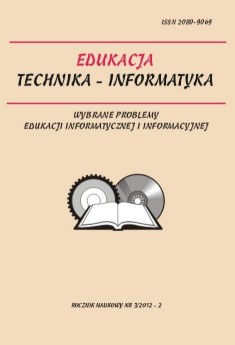Applying information technologies while studying “Numerical Methods and Computer Simulation” section of the “Computer Science and ICT” Middle School P
Applying information technologies while studying “Numerical Methods and Computer Simulation” section of the “Computer Science and ICT” Middle School P
Author(s): Elena Davlet'jarova, Jurij Medvedev, Irina V. NikolaevaSubject(s): Education
Published by: Wydawnictwo Oświatowe FOSZE
Keywords: numerical methods, computer models, computer experiment, the Information Technology, Department of the real roots of the equation with one variable, continuity, monotony, accurate root of the equation.
Summary/Abstract: The article describes the experience of using information technologies in the study section “Numerical Methods and Computer Simulation” in the subject “Informatics and ICT” primary school. The aims and objectives of the study material in this section on basic and core stages of continuous study of computer science. Consider some examples of the use of information technology in the study of educational material theme “Approximate methods for solving equations with one variable”. To illustrate the results of the research function y = f (x) for solving the equation f (x) = 0, and examples of opportunities for Mathcad charting and determine the roots of the equation. Considered VBA code refinement root of the equation f (x) = 0 by bisection of the interval for the table processor MS Excel. The article summarized the results of testing some educational material section “Numerical Methods and Computer Simulation” in the schools of the city of Vladimir. In the study of educational material in this section, students have the opportunity to conduct an experiment using a computer programming systems, spreadsheets, mathematical computer-aided design Mathcad and other computer software, select the appropriate options, analyze dependencies, predict outcomes, to conduct a graphical interpretation of the results. This contributes to a deeper understanding of the essence of numerical methods and their practical value, focuses on the clever use of computer software applications, and enriches the students’ new ways of solving problems.
Journal: Edukacja - Technika - Informatyka
- Issue Year: V/2014
- Issue No: 2
- Page Range: 413-418
- Page Count: 6
- Language: English

